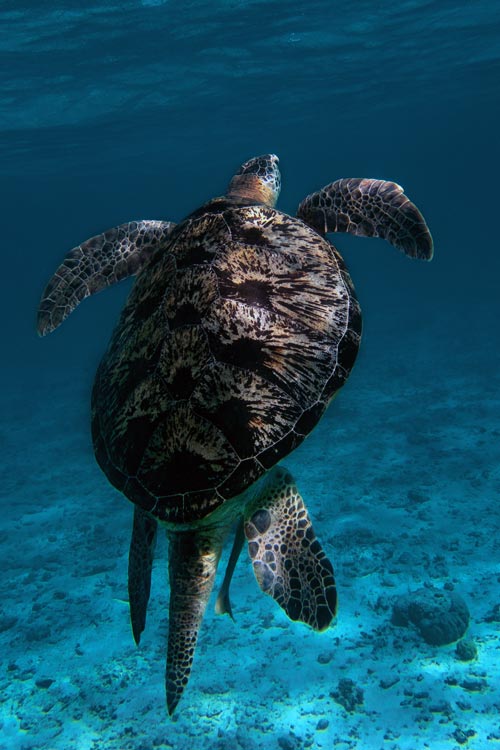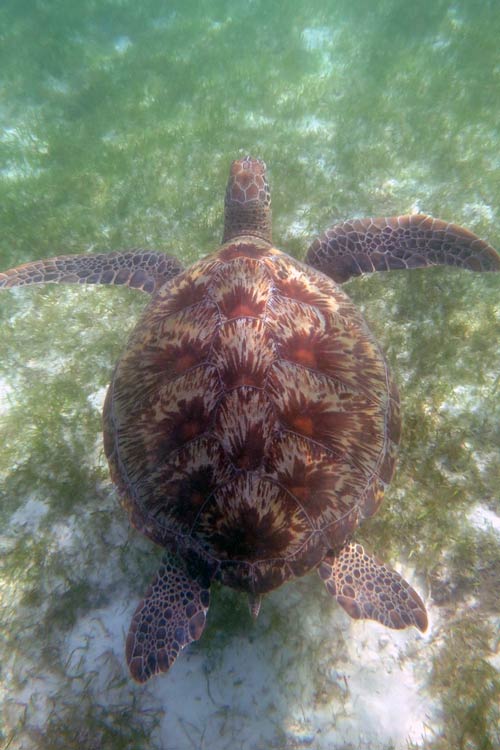Yes, sea turtles have tails. In fact, once sea turtles reach sexual maturity, the size of the tail can be used to reliably distinguish between male and female sea turtles. Males develop much longer tails – which may extend past their rear flippers – whereas females tails remain much shorter.
The tail of both male and female sea turtles contain a cloaca – a posterior opening for digestive, urinary and reproductive tracts – and, as such, the tail plays a crucial role in sea turtle reproduction.


References:
- Godley, B.J., Broderick, A.C., Frauenstein, R., Glen, F. and Hays, G.C. 2002. Reproductive seasonality and sexual dimorphism in green turtles. Marine Ecology Progress Series, 226, 125-133.
- Hendrickson, J.R. 1958. The green turtle Chelonia mydas in Malaya and Sarawak. Proc Zool Soc Lond, 130, 455-535.

